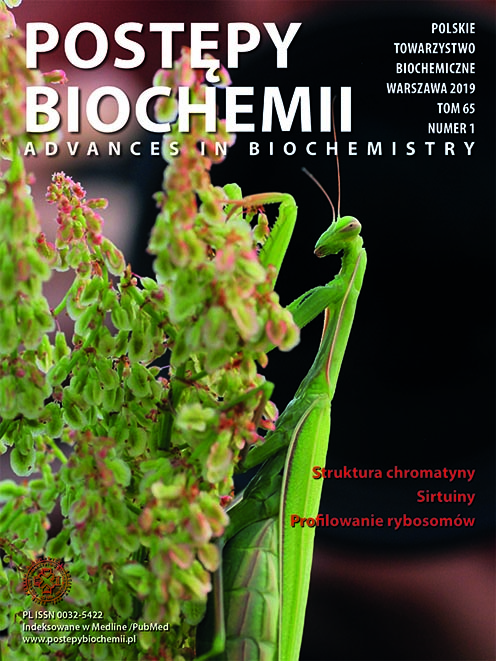Mechanisms controlling chromatin structure
DOI:
https://doi.org/10.18388/pb.2019_252Abstract
Genomic DNA is highly packaged in eukaryotic cells and occurs in the form of nucleoprotein complex called chromatin. Although high DNA compaction allows to store large amount of genomic information in the cell nuclei, it also restricts the access to DNA regulatory sequences. Therefore, to overcome this issue, chromatin must be subjected to various alterations which are dependent on few interrelated factors: DNA modification, histones variants and modifications, ncRNA, chromatin remodeling complexes and chromatin architecture in nuclei. They allow to multilayer regulation of fragile balance between transcriptionally active euchromatin and inactive heterochromatin. The newest research describe new chromatin elements, e.g. half nucleosomes, bivalent chromatin marker and pointed to few intermediate states between euchromatin and heterochromatin. Variety and remarkable amount of chromatin modifications require existence of multiprotein complexes reading, editing and integrating genomic information. Some of them are able to remodel nucleosomes in order to control access to particular DNA sequence. Due to the complexity of chromatin structure regulation studies describing these mechanisms are fundamental to understanding the eukaryotes life.
Downloads
Published
Issue
Section
License
All journal contents are distributed under the Creative Commons Attribution-ShareAlike 4.0 International (CC BY-SA 4.0) license. Everybody may use the content following terms: Attribution — You must give appropriate credit, provide a link to the license, and indicate if changes were made, ShareAlike — If you remix, transform, or build upon the material, you must distribute your contributions under the same license as the original. There are no additional restrictions — You may not apply legal terms or technological measures that legally restrict others from doing anything the license permits.
Copyright for all published papers © stays with the authors.
Copyright for the journal: © Polish Biochemical Society.




